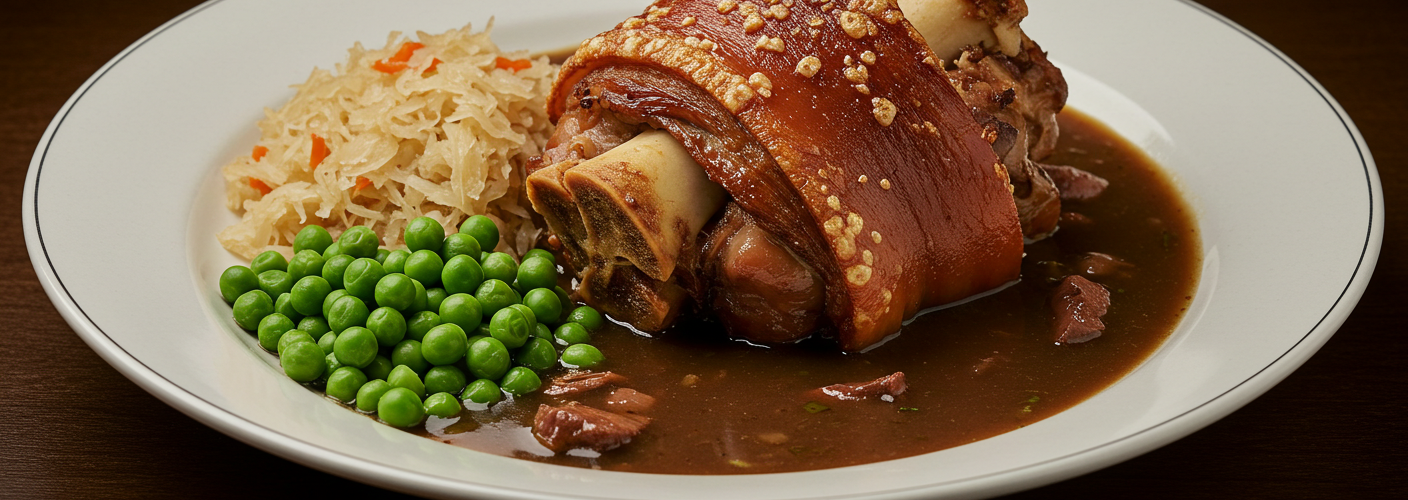Eisbein, a beloved dish that hails from German cuisine, is more than just a meal; it’s an experience steeped in tradition and flavor. This comfort food features a salt-cured pig knuckle that has been expertly simmered in broth, resulting in tender meat that practically falls off the bone. Commonly served with hearty sides like sauerkraut and puréed peas, Eisbein is a dish that showcases the richness of German culinary heritage.
A Culinary Tradition
The origins of Eisbein can be traced back to the humble kitchens of rural Germany, where it was a popular dish among the working class. Traditionally made from the hock of a pig, this dish symbolizes frugality and resourcefulness, with families finding ways to enjoy every part of the animal. Over the years, Eisbein has evolved from a rustic staple into a dish that can be found in restaurants and beer halls across Germany and beyond.
The uniqueness of Eisbein lies not only in its preparation but also in its presentation. The exquisite transformation of the pig knuckle through the curing and simmering processes results in a dish that is rich in flavor. The combination of being salt-cured and slowly cooked creates a depth that is both savory and satisfying.
Preparation and Cooking Techniques
Eisbein preparation starts with the selection of the perfect pig knuckle, preferably from a well-raised animal to ensure quality. The meat is then cured in a brine solution, which typically includes salt and various spices, allowing the flavors to infuse deeply. This curing process can take several days but is crucial in developing the distinctive taste that makes Eisbein so beloved.
Once cured, the knuckle is simmered in a flavorful broth, often enriched with herbs and vegetables. This slow-cooking method extracts the gelatin from the bones, giving the broth a rich body and the meat a soft, melt-in-your-mouth texture. The result is a beautifully cooked hock that can be served alongside classic accompaniments like tangy sauerkraut, which balances the richness of the meat, and puréed peas, adding a smooth and slightly sweet contrast.
Serving and Enjoyment
When served, Eisbein commands attention at the dining table. The knuckle is typically placed front and center, glistening with a golden-brown crust from the simmering process. The accompanying sauerkraut serves as a refreshing counterpart to the hearty meat, while puréed peas add a touch of earthiness that rounds out the meal. Many enjoy pairing Eisbein with a hearty German beer or a robust red wine, enhancing the overall dining experience.
The communal aspect of enjoying Eisbein cannot be overlooked. This dish is often shared among family and friends during gatherings and celebrations, making it a centerpiece of joy and camaraderie. As each guest savors their portion, stories are exchanged, laughter fills the air, and the shared experience becomes one to remember.
A Dish That Transcends Borders
While Eisbein holds a special place in German cuisine, its popularity has transcended borders, captivating food lovers around the globe. Whether you stumble upon it at a local German restaurant or decide to try your hand at making it yourself, Eisbein is a dish that invites exploration and appreciation. So, gather your loved ones, embrace the comforts of tradition, and enjoy the delightful flavors that Eisbein has to offer!




Add comment